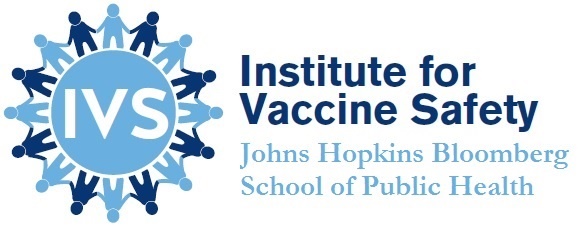Do Vaccines Cause Vasculitis or Polyarteritis Nodosa?
Conclusion | Epidemiological Evidence | Proposed Biological Mechanism | Archives | References
Conclusion
Polyarteritis nodosa (PAN) has been reported as a rare complication of natural infection with hepatitis B virus. Thus, hepatitis B vaccine prevents PAN by protecting against natural infection. Vaccines currently routinely recommended to the general population in the U.S.* have not been shown to cause vasculitis or PAN.
Epidemiological Evidence
The 2012 report by the Institute of Medicine (IOM) [1], now called the National Academy of Medicine (NAM), described two studies assessing exacerbation of vasculitis and influenza vaccine [2, 3], but these studies did not provide convincing evidence due to a lack of validity and precision. The IOM found no relevant studies of quality in the literature assessing onset of vasculitis or PAN and influenza or hepatitis B vaccines, or exacerbation of vasculitis and hepatitis B vaccine [1].
Since the IOM report, a randomized trial found that influenza vaccine was safe for patients in remission with anti-neutrophil cytoplasmic antibody-associated vasculitis [4], and a prospective observational study found that vaccinations had no significant clinical impact on patients with systemic necrotising vasculitis [5]. An Italian case-control study found an increased risk of Henoch-Schonlein purpura, a common childhood vasculitis, within 12 weeks of MMR vaccination (odds ratio 3.4; 95% CI 1.2-10.0) [6]. A large VSD study found that vaccination was associated with a decrease in incidence of the vascular disorder known as Kawasaki disease [7], and a 2017 systematic review concluded that evidence is lacking for a causal relationship between immunization and Kawasaki disease [8].
Proposed Biological Mechanism
PAN has been reported as a rare complication of natural infection with hepatitis B virus. Formation of immune complexes has been suggested as a potential mechanism for vasculitis or PAN after hepatitis B vaccine. Another possible mechanism is activation of the complement system, in which a cascade of proteolysis and successive release of cytokines functions to amplify the immune response but can damage host cells if not properly regulated. Other mechanisms that could contribute to vasculitis include autoantibodies or T cells [1].
The 2012 IOM report described two cases of exacerbation of vasculitis after influenza vaccine that showed recurrence of symptoms after vaccine re-challenge [9], and three cases of PAN after hepatitis B vaccine [10-13]; however, even when considering knowledge about the aforementioned natural infections, the IOM concluded that this mechanistic evidence was weak. The IOM also concluded that there was no mechanistic evidence for an association between PAN and influenza vaccine, between exacerbation of vasculitis and hepatitis B vaccine, or between onset of vasculitis and influenza vaccine or hepatitis B vaccine [1].
References
1. Institute of Medicine. In: Stratton K, Ford A, Rusch E, Clayton EW, eds. Adverse Effects of Vaccines: Evidence and Causality. Washington (DC): National Academies Press (US); 2012.
2. Stassen PM, Sanders JS, Kallenberg CG, Stegeman CA. Influenza vaccination does not result in an increase in relapses in patients with ANCA-associated vasculitis. Nephrol Dial Transplant 2008;23:654-8.
3. Holvast A, Stegeman CA, Benne CA, et al. Wegener's granulomatosis patients show an adequate antibody response to influenza vaccination. Ann Rheum Dis 2009;68:873-8.
4. Jeffs LS, et a. Randomized trial investigating the safety and efficacy of influenza vaccination in patients with antineutrophil cytoplasmic antibody-associated vasculitis. Nephrology (Carlton) 2015;20(5):343-51.
5. Kerneis S, et al. Do vaccinations affect the clinical course of systemic necrotising vasculitis? A prospective observational web-based study. Clin Exp Rheumatol 2016;34(3 Suppl 97):S89-92.
6. Da Dalt L, et al. Henoch-Schonlein purpura and drug and vaccine use in childhood: a case-control study. Ital J Pediatr 2016;42(1):60.
7. Abrams JY, et al. Childhood vaccines and Kawasaki disease, Vaccine Safety Datalink, 1996-2006. Vaccine 2015;33(2):382-7.
8. Phuong LK, et al. Kawasaki disease and immunisation: A systematic review. Vaccine 2017;35(14):1770-1779.
9. Vellozzi C, Burwen DR, Dobardzic A, Ball R, Walton K, Haber P. Safety of trivalent inactivated influenza vaccines in adults: background for pandemic influenza vaccine safety monitoring. Vaccine 2009;27:2114-20.
10. Begier EM, Langford CA, Sneller MC, Wise RP, Ball R. Polyarteritis nodosa reports to the vaccine adverse event reporting system (VAERS): implications for assessment of suspected vaccine-provoked vasculitis. The Journal of rheumatology 2004;31:2181-8.
11. Bourgeais AM, Dore MX, Croue A, Leclech C, Verret JL. [Cutaneous polyarteritis nodosa following hepatitis B vaccination]. Ann Dermatol Venereol 2003;130:205-7.
12. De Keyser F, Naeyaert JM, Hindryckx P, et al. Immune-mediated pathology following hepatitis B vaccination. Two cases of polyarteritis nodosa and one case of pityriasis rosea-like drug eruption. Clin Exp Rheumatol 2000;18:81-5.
13. Ventura F, Antunes H, Brito C, Pardal F, Pereira T, Vieira AP. Cutaneous polyarteritis nodosa in a child following hepatitis B vaccination. Eur J Dermatol 2009;19:400-1.


